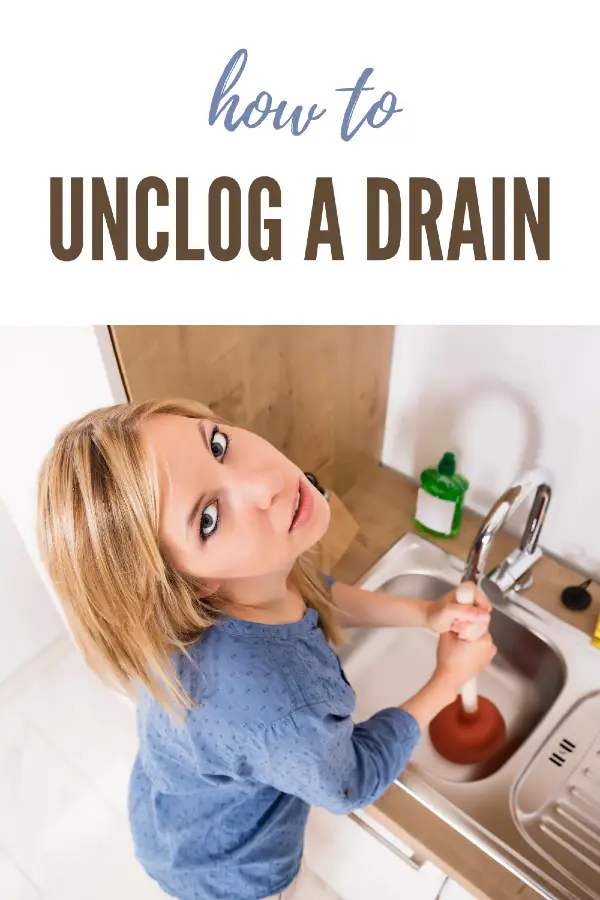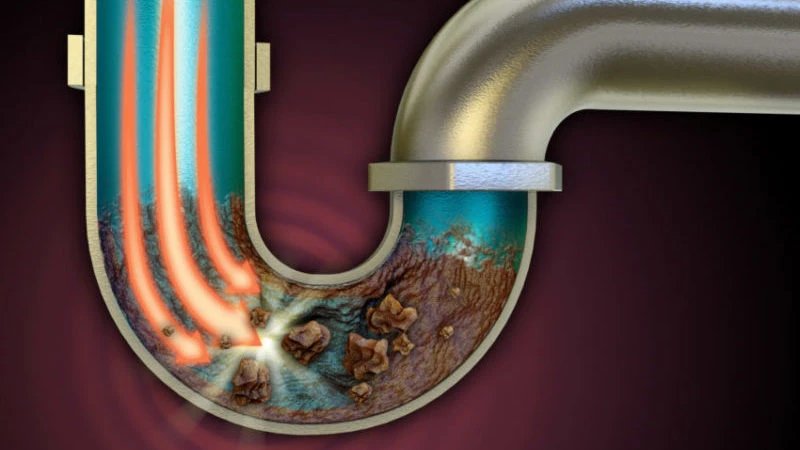Disclosure: This post may contain affiliate links, meaning we get a commission if you decide to make a purchase through our links, at no cost to you. Please read our disclosure for more info.
Is water pooling up around your ankles when you shower?
Is your kitchen sink draining slower than usual?
These are the warning signs that your drains have started to clog – hair and greasy gunk have built up in the drains – and if you don’t figure out how to unclog your drain, you’ll be sitting with a sink- (or tub-) full of water.
If that happens, don’t panic! Here are 5 quick and easy steps you can try to get everything draining smoothly again!
In This Post:
How to Unclog a Drain
Step 1. Plunger
We usually associate plungers with toilets but they can actually be used on any type of drain, whether you’re trying to figure out how to unclog a bathtub or a sink.
Place the base of the plunger over the drain, then push-and-pull the handle for about 15 seconds. Lift up to see if the water drains. If it doesn’t, repeat the process 3 or 4 times.
Step 2. Boiling Water
The second step to fixing a clogged drain is to use boiling water. With a small mug or ladle, remove the water sitting in the sink (or bathtub) and pour it into another container.
Bring a kettle or pot of water to a rolling boil. Then carefully pour the boiling water into the sink. Allow it to sit for a few minutes.
If it starts to drain, great! If it doesn’t, allow the water to cool completely before moving on to the next step.
Step 3. Baking Soda and Vinegar
Baking soda and vinegar are popular cleaning solutions for your home, but they can also help unclog your drains.
Once the water from the previous step has cooled, use a mug or ladle again to remove as much of it as you can.
Pour 1 cup of baking soda into the drain, and then follow that with 1 cup of white vinegar. Wait about 15 minutes while the soda and vinegar interact. Once the bubbly foaming has stopped, run hot water down the drain.
Step 4. Clean the P-Trap
The next step in how to fix a clogged sink does involve tools but don’t let that deter you – you only need a bucket and adjustable plumber’s wrench.
Underneath the sink is a U-shaped pipe (called a P-Trap). Place a bucket under this pipe to collect the water that will spill out.
With the plumber’s wrench, loosen the slip nuts on either end of the pipe and then by hand untwist until the P-trap is free. The water trapped in the pipe will come out at this point, hence the bucket being there.
Empty the contents of the P-trap into the bucket and check the insides of the popes for any debris. Then, rinse the P-trap with water and put everything back together, using the plumber’s wrench to tighten the slip nuts at the end.
Step 5. Drain Snake
One final option to try to unclog a clogged sink is to use a drain snake – a long, flexible metal rope with a spiral tip at the end. Some people may prefer to call a professional plumber at this point such as plumber richmond hill.
Put this spiral tip end into the drain and feed it into the pipe until you feel resistance. Rotate the snake against the blockage until you feel it release then pull the snake out of the pipe.
Some of the blockage will break up and move down the drain, but some of it may come back when you pull the snake out.
Is Your Drain Still Clogged?
If none of these suggestions work and you’re still trying to solve how to fix a clogged drain, then it might be time to call a professional. A good, qualified plumber should be able to fix your clogged drain in no time!
Keep browsing our site for more articles like this one.




